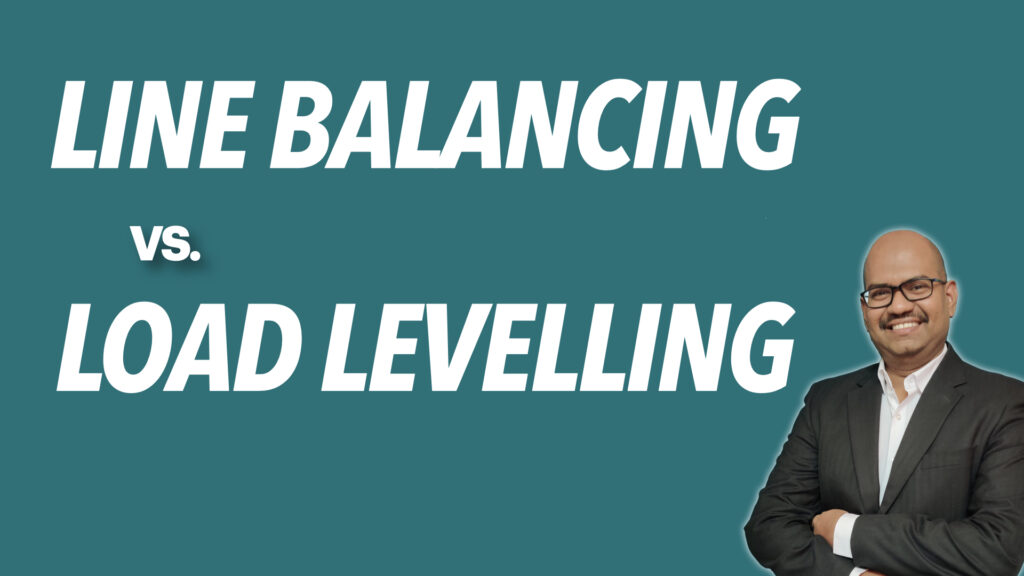Even a lot of senior professionals from the industry are confused on these terms.
Imagine a company that manufactures Toothpaste and there are 4 different types of toothpaste flavours (Regular, Salt, Blue Gel and Red Gel). The processes for manufacturing are:
1. Mixing the chemicals – 1T/hour (1000kg/hour)
2. Tube Filling – Each tube has 200gms of paste
3. Cap Fixing
4. Box Packing
5. Outer Carton Packing – 100 tubes in 1 outer carton
Ensuring that the cycle times of all the above processes are equal (capacity of each process has to be uniform). For e.g. if the output of the mixing plant is 1T per hour, the subsequent processes like Tube Filling, Cap fixing, Box packing and outer carton packing should be able to handle 1000kg/hour. i.e. (1000X1000g / 200g = 5000 tubes per hour). Tube Filling machine should be able to fill 5000 tubes per hour. Cap fixing machine should be able to fix 5000 caps per hour, etc. Outer Carton packing should be able to pack 50 outer cartons (5000/100tubes = 50).
If the capacity of the Cap Fixing machine is only 2500 caps per hour, we may need to reduce the cycle time (and improve the capacity of that machine) or Buy another Cap Fixing machine to balance the line. This is called Line Balancing
Now let us assume that it takes 8 hours to do a change-over. i.e to change the line from “Regular” to “Salt” and from “Salt” to “Blue Gel” / “Red Gel”. Since it takes 8 hours and to reduce the changeover cost, the company does the changeover only once in a week. i.e. for 1 week, the line produces only Regular Toothpaste. In the next week “Salt” would be produced and in the 3rd week Blue Gel would be produced and so on. In this case, we are producing 1 month requirement in 1 week and store as Finished Goods stock. Since we have 4 different products, there would be a high FG stock. In this case we are producing Every Product Every Week (EPEW).
What if we can reduce the Changeover time to 1 hour and the company plan to produce just 3 days of stock for each product. We can produce in a flexible manner to meet the customer demand more precisely. This is called Load Levelling.
So, Line Balancing is to ensure all processes in the line are running at the same pace to meet the demand. Load Levelling focuses on producing the right product mix to ensure low FG stock and becoming flexible by reducing the Changeover time.
If you are interested to learn lean in a simple and holistic manner, join our FREE Lean Champion Course (with certification). It covers the basics of Lean and also Value Stream Mapping in detail.
Read this Article in Linkedin and share with your contacts also.


Join 3500+ Professionals who receive our Weekly Newsletter containing Simple and Practical ideas to help achieve Results in their companies.
Hash Management Services LLP, 2023 © All Rights Reserved